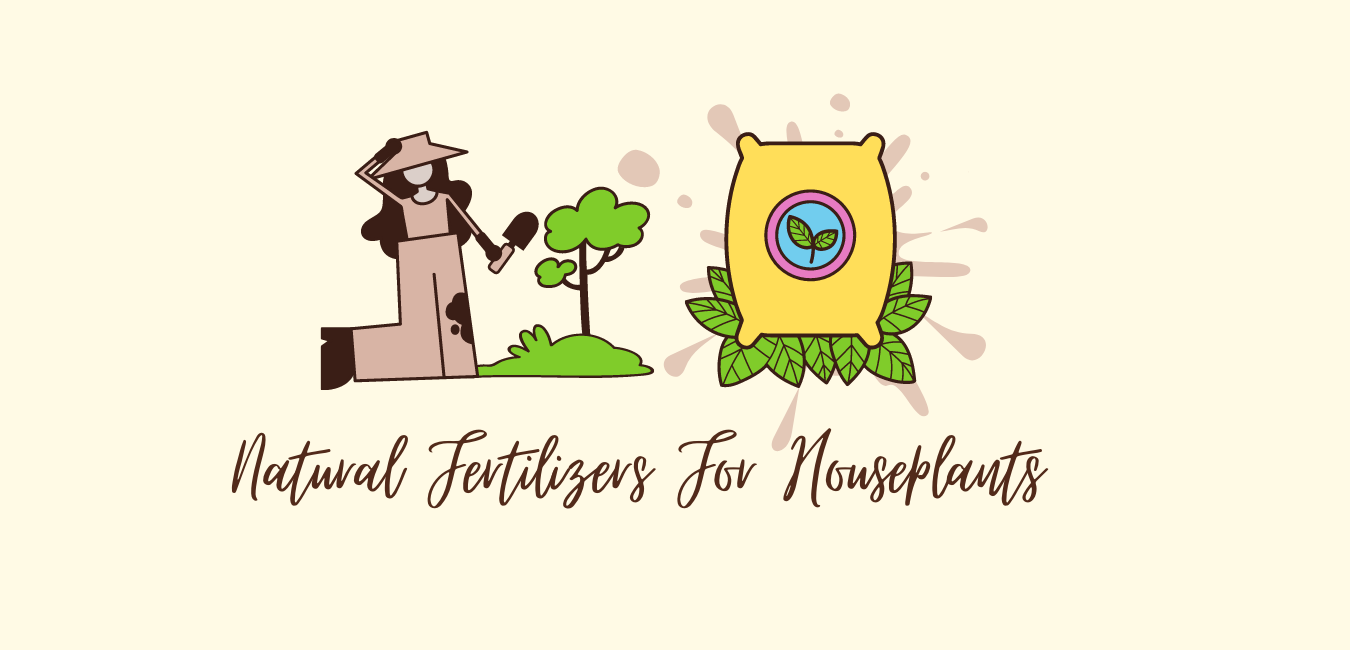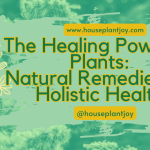HousePlantJoy is supported by our audience. When you purchase through one of our links, we may earn a small affiliate commission. As an Amazon Associate I earn from qualifying purchases. Your cost is not affected.
==================
10 Natural Fertilizers For Houseplants
Natural houseplant fertilizers help keep your indoor plants healthy and thriving. These natural fertilizers are especially beneficial because they add essential nutrients like potassium, nitrogen, calcium, magnesium, and phosphorus to the soil. If you’re wondering how to boost your plant’s health naturally, consider using fertilizer for houseplants naturally. These organic options not only provide the necessary nutrients but also promote a more vibrant and lively indoor garden.
Note: Natural fertilizers break down slowly, so your indoor plants will have a long-lasting supply of nutrients to support their growth. Also, consider making a homemade liquid fertilizer for indoor plants using one or a combination of these natural ingredients, or opt for organic and synthetic fertilizers for a convenient alternative.
Natural Fertilizers For Houseplants
1. Banana peels
First on our list of natural fertilizers is Banana Peels. You eat the banana. Your plants benefit from the peels! In our home, the goats get first choice for banana peels. Yes, they love them and they provide nutrients for our beloved pets. But your plants gain nutrition from them, too, making banana peels an excellent organic fertilizer option.
Some banana peel facts:
- Rich in potassium, small amounts of nitrogen, phosphorus, magnesium
- How to use options
- Lay directly on top of the soil and cover with a small amount of soil
- Or, cut into small pieces and mix into soil
- Another option, blend the peels and mix with water to make a liquid fertilizer
2. Eggshells
Eggshells offer so much in the way of minerals that it seems a shame to toss them in the garbage. We recycle and compost, so very little goes to waste. But eggshells work quite well added right to your plants, too.
Consider these facts:
- Rich in calcium, also contains phosphorus and other minerals. In addition, help reduce acidity in the soil
- How to use options
- remove the inner membrane, wash shells, allow to dry
- Crush and mix into soil
- Moreover, crush and soak overnight in water to make a liquid fertilizer
3. Compost tea and Compost
Yes, we compost. Once you begin, you find it offers many benefits. You reduce your waste that goes to the garbage truck. And further, your houseplants and those outdoors, too, benefit from the rich nutrients produced by what would otherwise be wasted.
In fact, compost and compost tea offer:
- It is rich in many nutrients
- Brew in a compost or worm bin
- Dilute and pour onto soil
Our sister site: BackyardPatioLife.com offers useful information on composting, too.
4. Cooking water
When you steam or boil vegetables, fruit, or grains, nutrients leach into the cooking water. Most people dump that down the sink. We think it provides better use when used to water our plants.
The facts:
- Many nutrients from water used to cook vegetables and starches
- Allow water to cool before pouring onto plant soil
5. Coffee grounds
Do plants need coffee? Well, it turns out, our plants do in fact love coffee grounds. Yes, you might even pour that list little bit of black coffee right on the plants, too. But please, allow it to cool first to avoid burning the roots. And no, don’t include the cream and sugar.
Coffee ground fact:
- Mix with potting soil
- Combine with water and allow to steep, then use the liquid to water plants
- Increases acidity so best used on acid-loving plants such as African violets, jade plants, Christmas cactus, and ferns.
6. Green tea
Like coffee, your green tea provides essential nutrients that help your plants stay healthy. Use leftover tea liquid. However, don’t discard the tea bag contents (or loose tea, if that’s your option). Instead, add that to your plants, just as you would coffee grounds. Green tea leaves work wonders too, enhancing your plant’s growth with their natural benefits.
Green tea facts:
- Contains several nutrients
- How to use options
- Empty the used tea bags and mix the contents with plant soil
- Steep in water and use the liquid to water plants
- Similar to coffee grounds, this is best for acid-loving plants
7. Epsom salt
While Epsom salts offer people many benefits, including soaking those tired feet, your plants enjoy them, too. Just a little goes a long way, though. See the facts below.
Epsom salt facts:
- Salt contains the minerals magnesium and sulfate
- How to use options
- Dissolve a teaspoon of Epsom salts into a quart of water
- Sprinkle a small amount of Epsom salts on the surface of the soil.
8. Fish tank water
I use this one regularly. We have two large fish tanks and our freshwater fish collection happily supplies me with plant water whenever I need it. In fact, aquaponics uses fish waste to feed plants, and the plants, in turn, clean the water.
Our indoor system is a bit more manual. I dip water out of the fish tank, often choosing our large goldfish tank first. After watering the plants, I add more fresh water to the tank. As a side note, when our fish tank filters need cleaning, we use them in our backyard aquaponics system. I’ve written a little about this on the backyardpatiolife.com website.
Facts about fish water:
- Abundant in nutrients including nitrogen and potassium, plus more
- Mini aquaponics: use water from your fish tank to water your plants. It is normally diluted sufficiently and can be used right from the tank.
9. Hair
Natural hair serves as a great additive to compost bins, enriching them with essential nutrients. Moreover, incorporating it directly into the soil of your plants acts as a natural fertilizer, supplying much-needed nourishment directly to the roots. If your collie happens to provide more hair than your plants require, it’s advisable to use small amounts at a time. Gardeners and backyard enthusiasts often distribute the excess hair outdoors. When applied just before a rainfall, the hair seamlessly integrates into the soil, enhancing its fertility.
Consider these hair facts:
- Contains nitrogen, magnesium, and more nutrients
- Use human hair or pet hair. Mix into the soil.
10. Molasses
- Contains many nutrients
- Mix one tablespoon of molasses with 2 quarts of water. In this half-gallon, your molasses provides:
- manganese:
- magnesium:
- copper:
- vitamin B-6:
- selenium:
- potassium:
- iron:
- calcium:
- and other micronutrients
When is the best time to fertilize indoor plants?
- Fertilize houseplants during spring and summer when they’re actively growing.
- However, houseplants don’t generally need to be fertilized during the cold winter months.
Ready to add more nutrients to your houseplants?
These natural fertilizers for houseplants offer you ways to use products you might normally toss. We find that composting, on a large or small scale, makes a big difference in our waste amounts. By adopting eco-friendly practices and avoiding chemical fertilizers, you not only nurture your plants but also contribute positively to the environment.
Although your plants generally won’t need fertilizing during the winter months, you might consider composting some of these items to create homemade fertilizer, which can be added during the growing season.
Read More:







